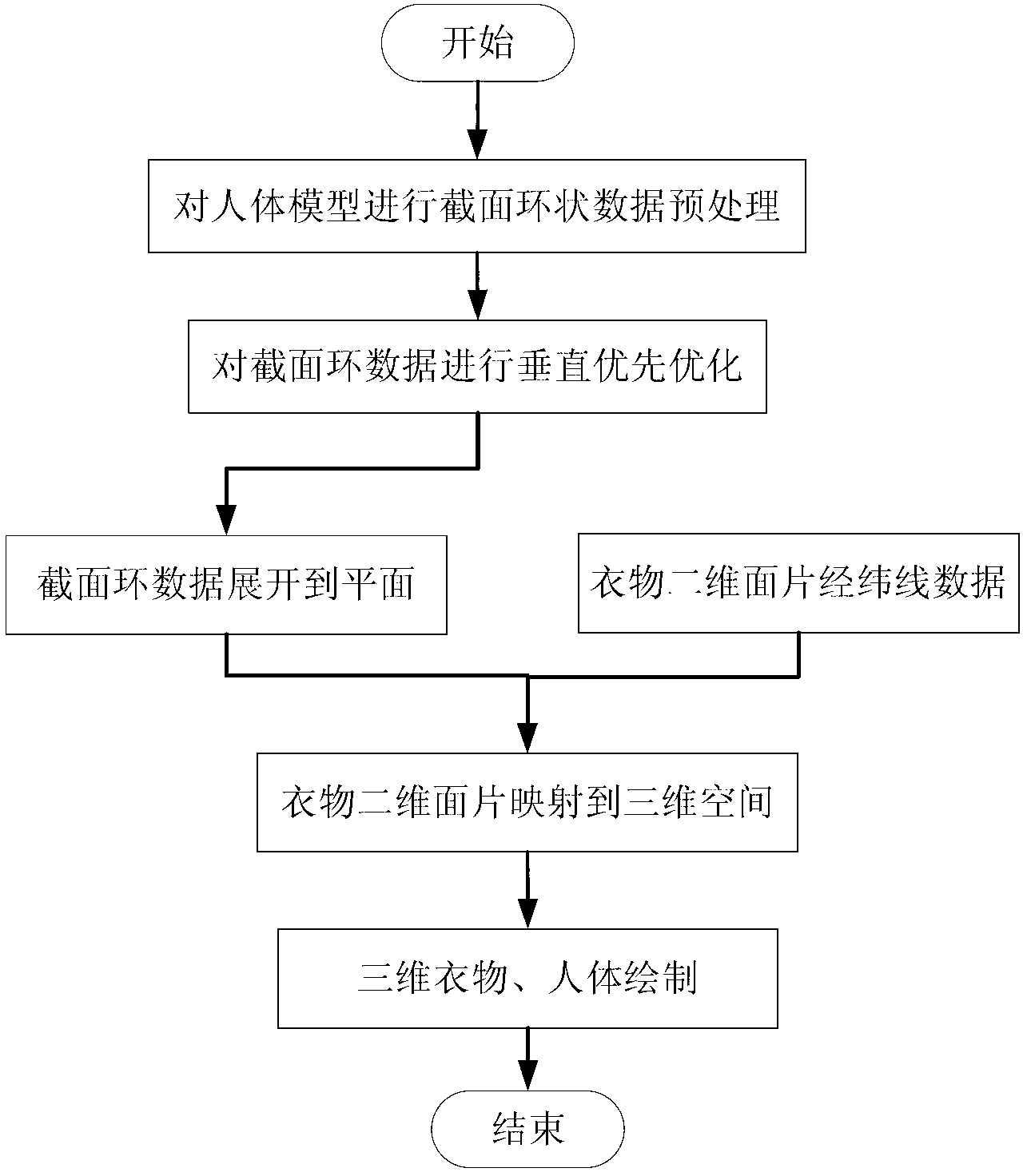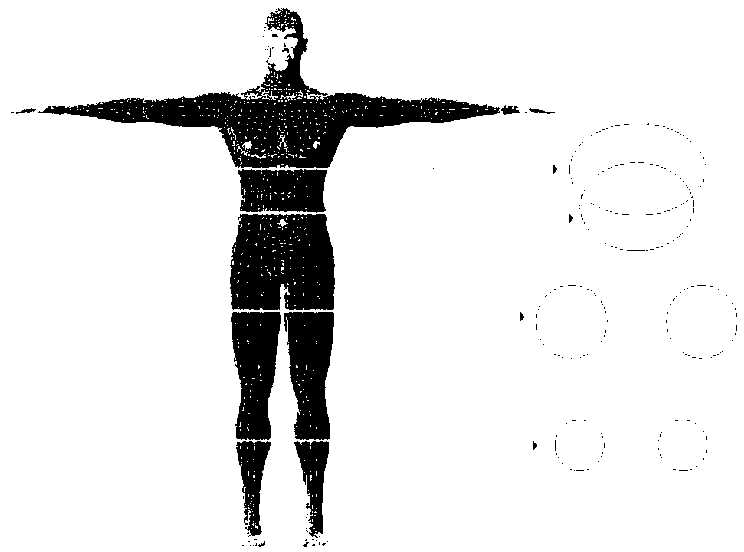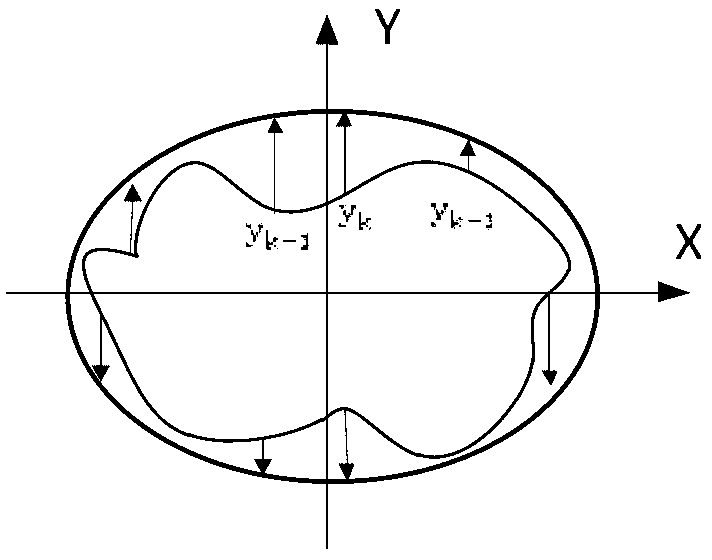Clothes surface piece three-dimensional mapping method based on human body section ring data
A clothing and cross-section technology, which is applied in image data processing, 3D modeling, instruments, etc., can solve problems such as the inability to maintain the properties and information of space surfaces, increase the calculation amount of 3D mapping, and not be an algorithm. Drawing and building physical models, simplifying the organization of human data, and reducing the amount of data
- Summary
- Abstract
- Description
- Claims
- Application Information
AI Technical Summary
Problems solved by technology
Method used
Image
Examples
Embodiment Construction
[0036] The present invention will be further described in detail below in combination with specific embodiments.
[0037] (1) Establish a 3D human body model, generate and preprocess the circular data of the human body section;
[0038] The first step is to divide the human body data into blocks. Divide human body data into neck, chest, waist, buttocks, buttocks and legs, left upper arm, left forearm, right upper arm, right forearm, left thigh, right thigh, and right calf, and each part Organized into the same data structure, including the end face, axial direction, local coordinate system, and set of contained section rings of this part. The two end faces of each part are parallel, the connecting line between the centers of the two end faces is the axial direction of this part, and the local coordinate system is relative to the human body coordinate system, which is convenient for coordinate transformation.
[0039] The second step is to eliminate the triangles that do not ...
PUM
 Login to View More
Login to View More Abstract
Description
Claims
Application Information
 Login to View More
Login to View More - R&D
- Intellectual Property
- Life Sciences
- Materials
- Tech Scout
- Unparalleled Data Quality
- Higher Quality Content
- 60% Fewer Hallucinations
Browse by: Latest US Patents, China's latest patents, Technical Efficacy Thesaurus, Application Domain, Technology Topic, Popular Technical Reports.
© 2025 PatSnap. All rights reserved.Legal|Privacy policy|Modern Slavery Act Transparency Statement|Sitemap|About US| Contact US: help@patsnap.com



